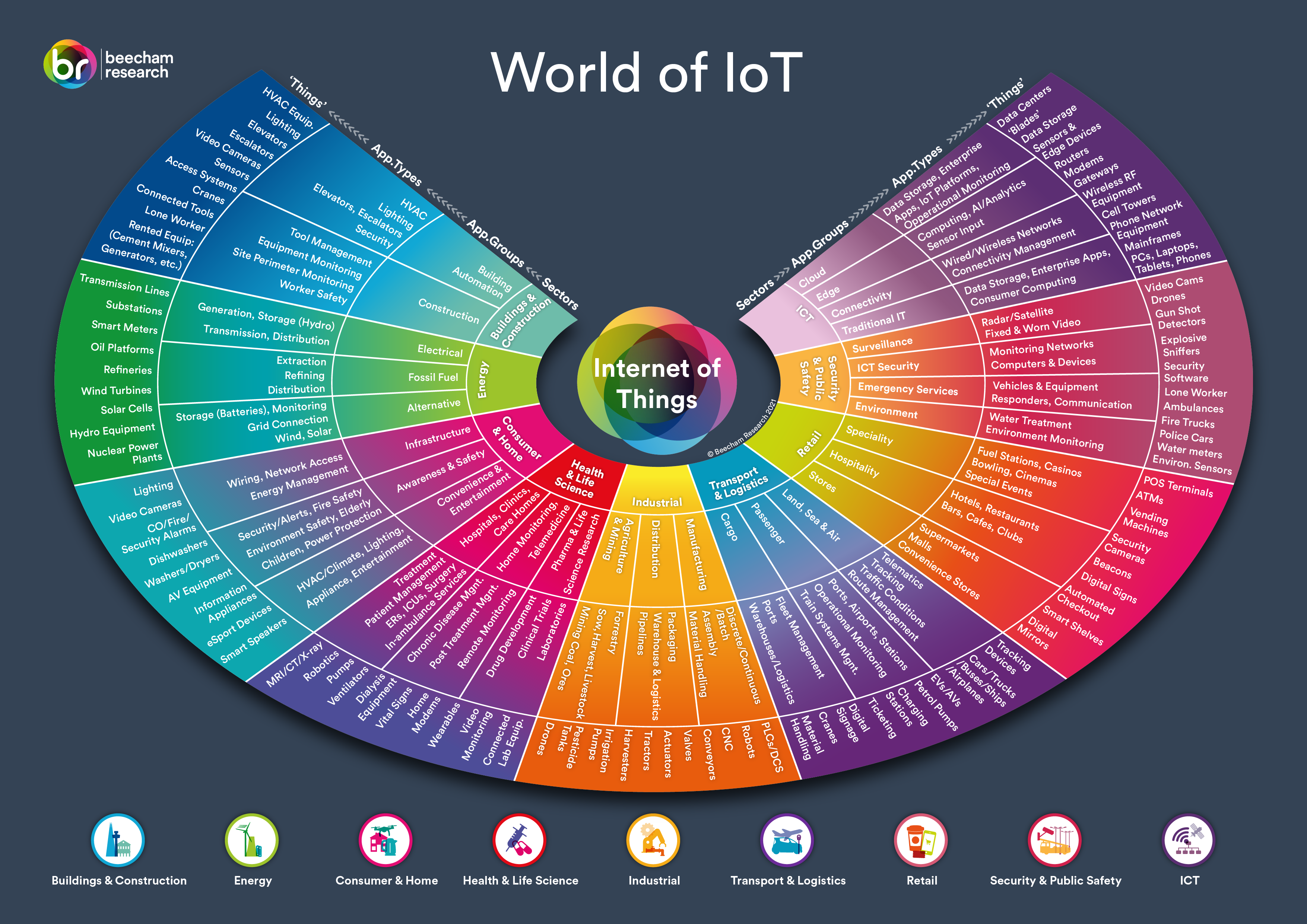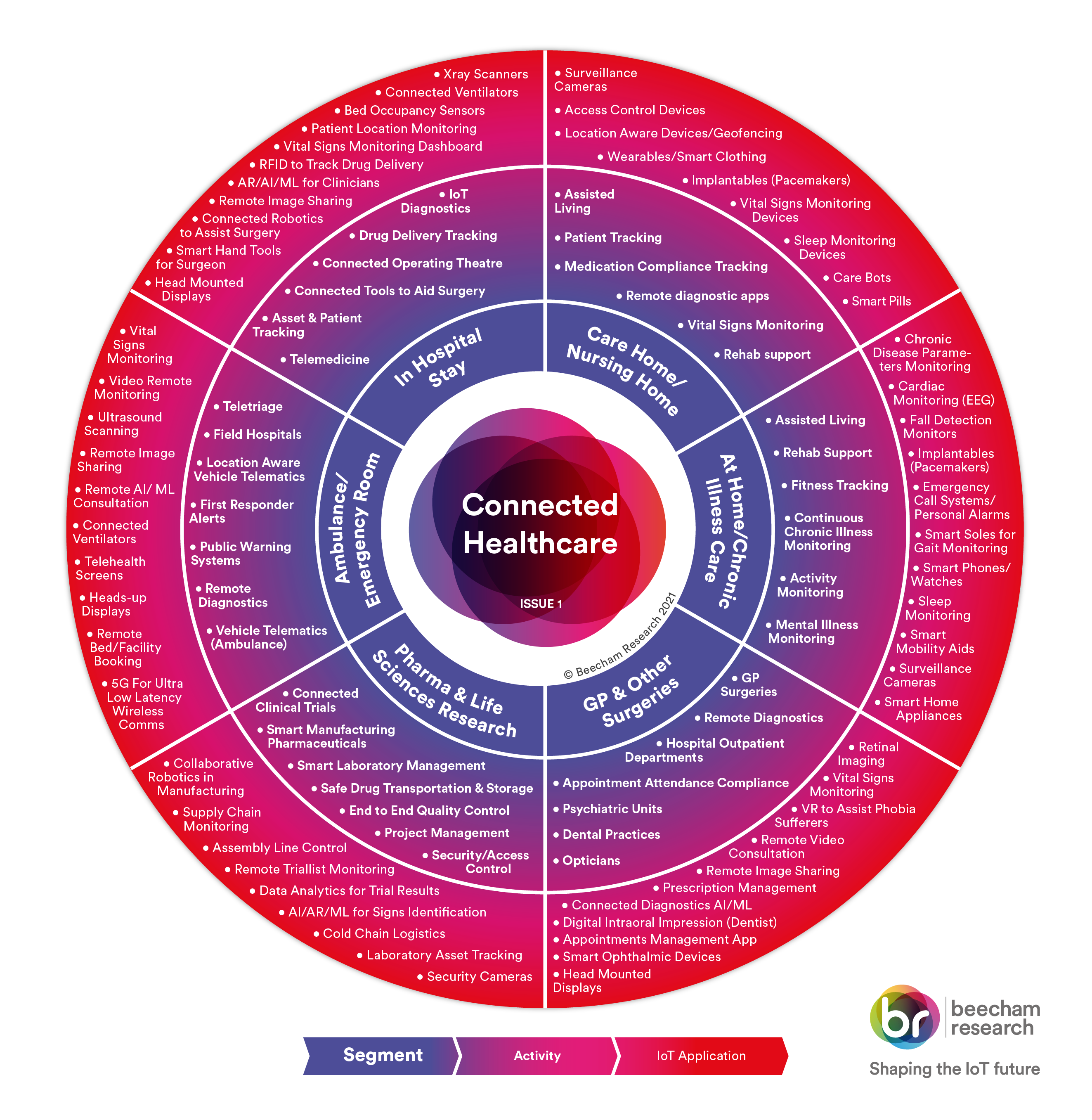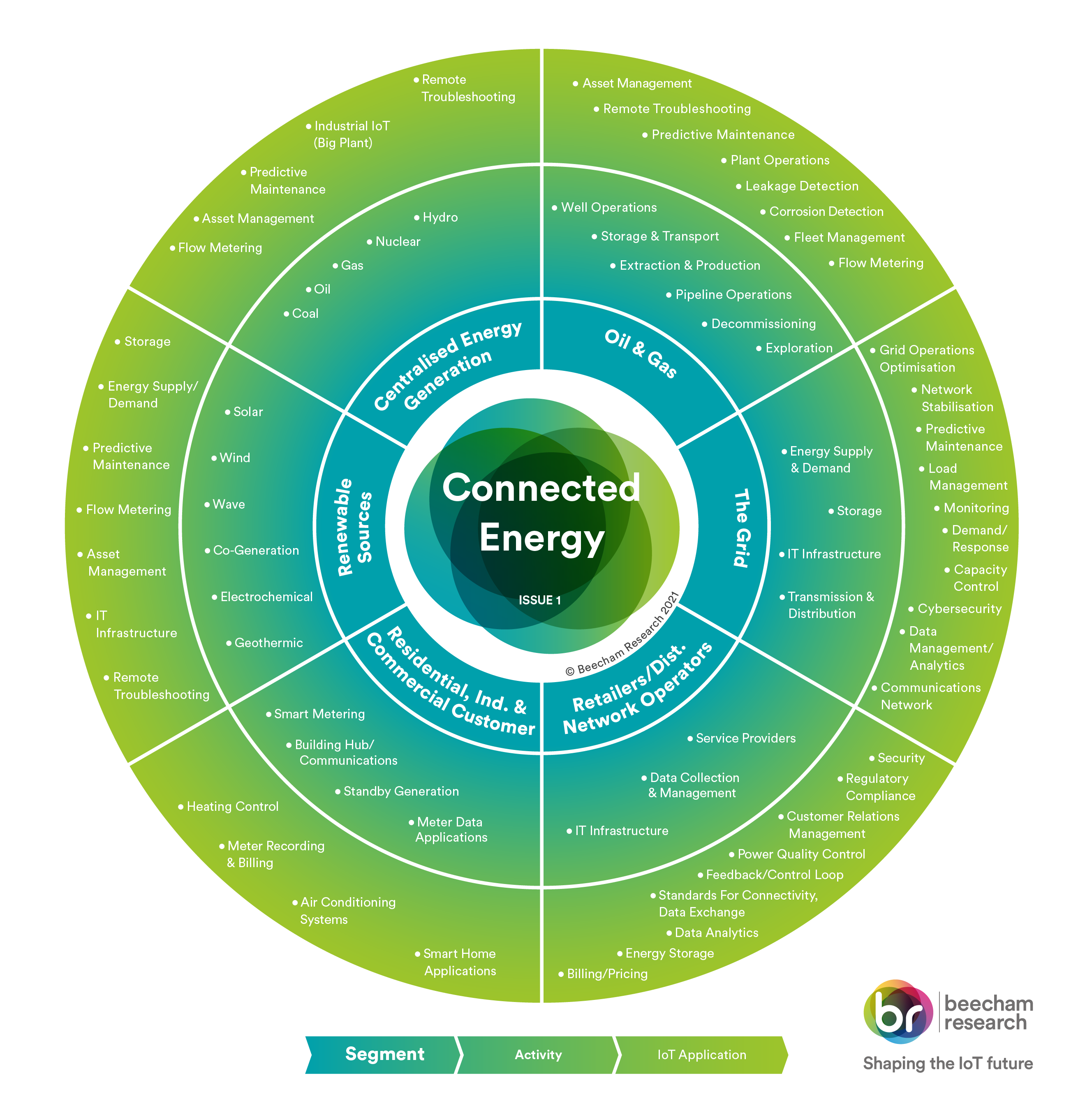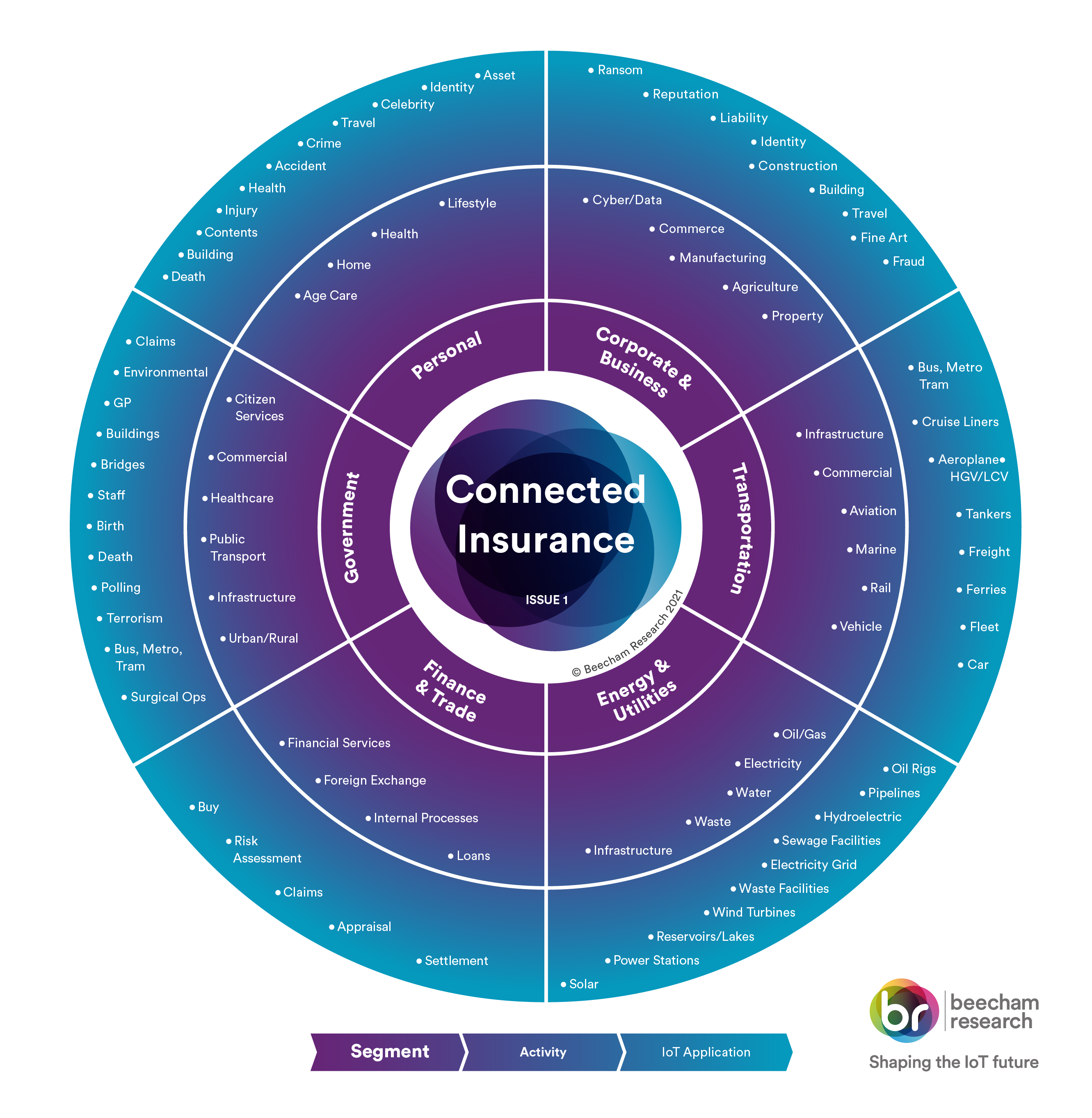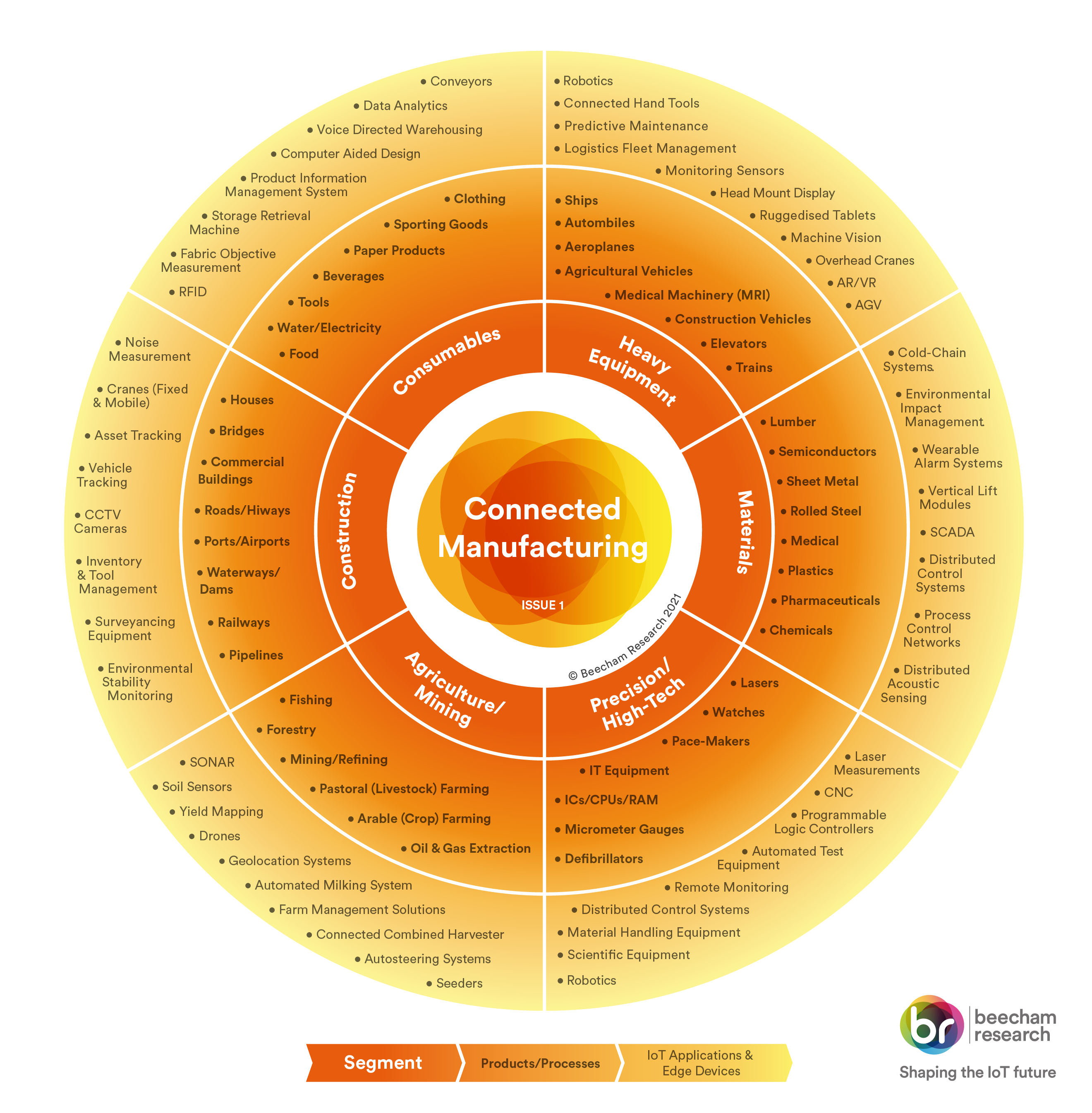Connected Retail Sector Chart
In this chart, the inner layer highlights the 6 key operational segments within the retail sector. The middle layer then indicates the typical locations for related activities within each of the segments. The outer layer shows examples of the IoT application areas and related devices used within those locations. As a result, the chart provides a cross-reference between operational segments in the retail sector and related IoT application areas/devices.
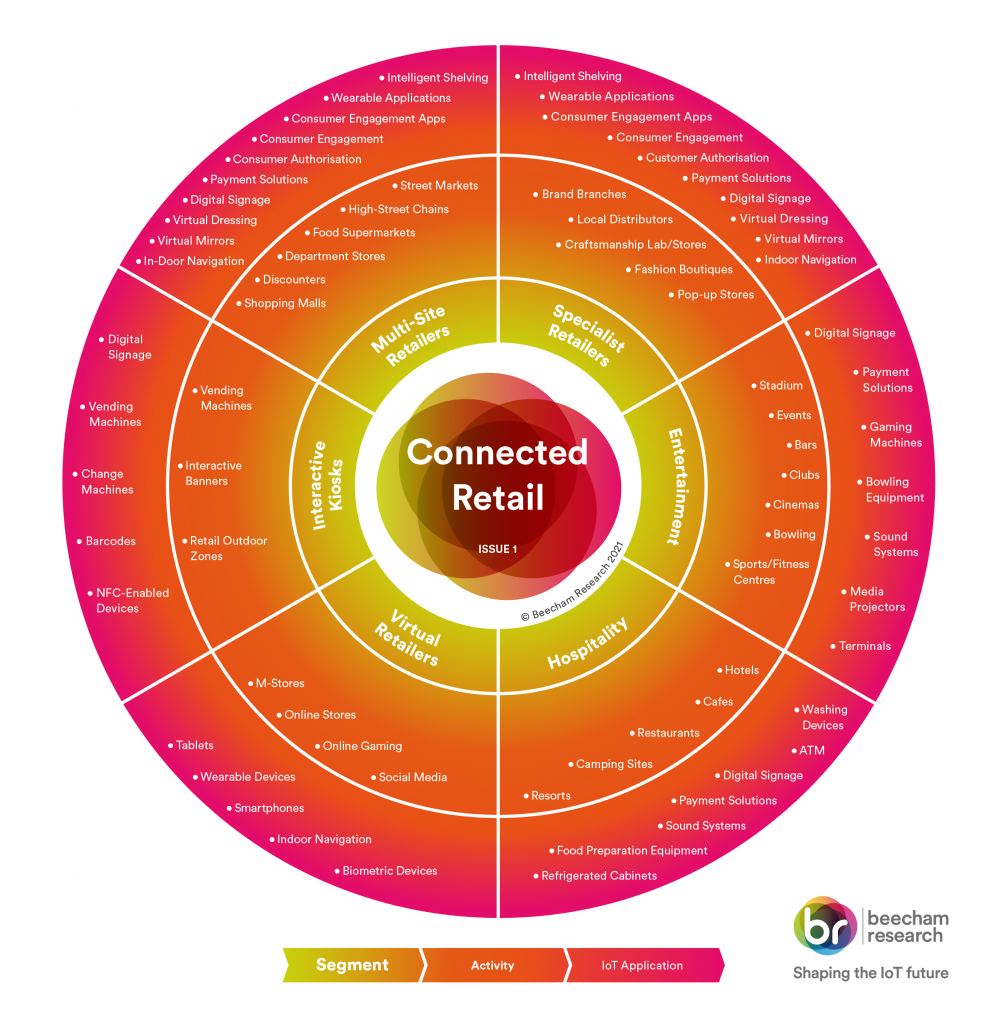
Among individuals’ activities, shopping is a good example of the impact of digital technologies in our decision-making process. In the pre-Internet era, the purchase of an item was experienced in very similar ways by almost all consumers. They could browse magazines, identify an item or items they liked, share their views with friends and families, and then go in person to the store. In the store, they would have compared/tried different items with the help of a shop assistant. Consumers could then choose an item and buy it or leave the shop and go to another.
Today, the widespread use of the Internet and smartphones has opened new channels of knowledge for consumers. Consumers find themselves faced with a diverse, rich, and immediate flow of information about the item they want to buy. This flow of information follows them wherever they go. They can see products, read reviews, share opinions, switch from one on-line shop to another, and purchase the product wherever they are, whenever they like.
As we move towards greater use of IoT, technology can reinvent shopping in a connected, intelligent and sustainable way. The retailing flow from design and manufacturing to the final customer purchase will increasingly become a continuum of activities developed in different physical spaces, but strongly linked by a solid back-end infrastructure that brings together diverse connected devices and sensors. From a consumption perspective, the shopping activity will increasingly become an experience that merges moments in physical spaces such as the store, public spaces and home environments with activities in virtual spaces created and defined by different devices and technologies. This will also enable consumers to have an increasingly proactive role in the production process of goods. On the other hand, retailers will have a detailed picture of all the steps in the product lifetime and in the consumer behaviour. Their major effort is to create the multi-environment experience consumers want and IoT has a major part to play in this.

